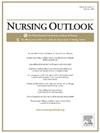Differences in hospital staff nurses’ and nurse leaders’ assessments of the work environment and patient safety are associated with staff nurse burnout
IF 3.7
2区 医学
Q1 NURSING
引用次数: 0
Abstract
Background
Nurse burnout remains a significant concern, with modifiable factors playing a crucial role in its mitigation or exacerbation.
Purpose
We examined the association between nurse burnout and assessment gaps in work environment and patient safety culture between nurse leaders and staff nurses, and whether these associations varied by Magnet status.
Methods
Data from the U.S. Clinician Wellbeing Study and RN4CAST-NY/IL Study (13,381 staff nurses, 1,722 nurse leaders) in 2021 were analyzed using multiple linear regression.
Discussion
Nurse leaders rated work environments and patient safety culture more favorably than staff nurses. A one-point gap in work environments was linked to a 13% increase in burnout (b = 12.99, p = .001). A one-point gap in patient safety culture was associated with a 2% increase (b = 1.75, p = .015). Associations were weaker in Magnet hospitals (b = −4.63, p = .007).
Conclusion
Addressing assessment gaps between leaders and staff nurses is vital for reducing burnout.
医院工作人员护士和护士长对工作环境和患者安全评估的差异与工作人员护士职业倦怠有关
护士职业倦怠仍然是一个值得关注的问题,可改变的因素在其缓解或加剧中起着至关重要的作用。目的探讨护士职业倦怠与护士长和普通护士在工作环境和患者安全文化方面的评估差距之间的关系,以及这些关系是否因磁铁身份而异。方法采用多元线性回归分析美国临床医师幸福感研究和RN4CAST-NY/IL研究的数据(13381名护理人员,1722名护士长)。讨论护士领导比普通护士更喜欢工作环境和病人安全文化。工作环境中1分的差距与13%的倦怠增加有关(b = 12.99, p = 0.001)。患者安全培养的1点差距与2%的增加相关(b = 1.75, p = 0.015)。磁体医院的相关性较弱(b = - 4.63, p = .007)。结论解决领导与护士长之间的评估差距是减少职业倦怠的关键。
本文章由计算机程序翻译,如有差异,请以英文原文为准。
求助全文
约1分钟内获得全文
求助全文
来源期刊

Nursing Outlook
医学-护理
CiteScore
6.20
自引率
7.00%
发文量
109
审稿时长
25 days
期刊介绍:
Nursing Outlook, a bimonthly journal, provides innovative ideas for nursing leaders through peer-reviewed articles and timely reports. Each issue examines current issues and trends in nursing practice, education, and research, offering progressive solutions to the challenges facing the profession. Nursing Outlook is the official journal of the American Academy of Nursing and the Council for the Advancement of Nursing Science and supports their mission to serve the public and the nursing profession by advancing health policy and practice through the generation, synthesis, and dissemination of nursing knowledge. The journal is included in MEDLINE, CINAHL and the Journal Citation Reports published by Clarivate Analytics.
 求助内容:
求助内容: 应助结果提醒方式:
应助结果提醒方式:


